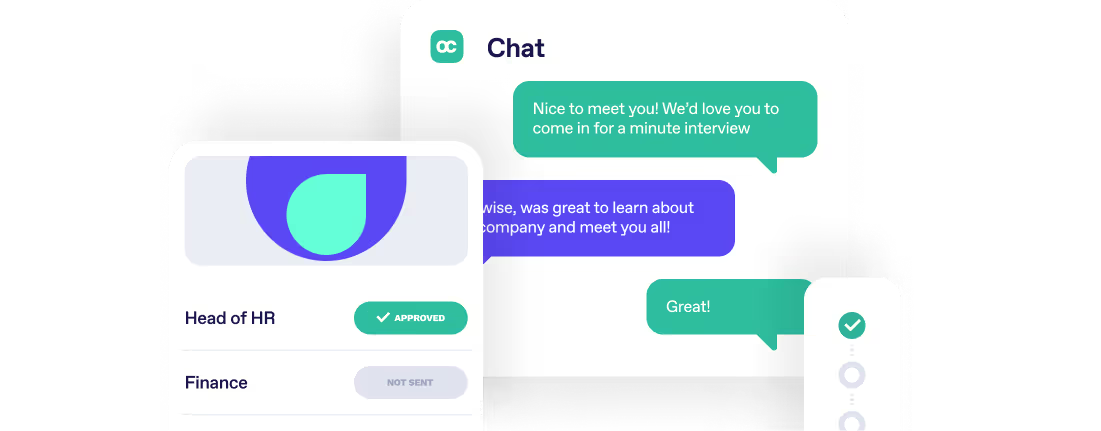5 Ways to Manage Employees Remotely



The option to build a remote team unlocks talent on a global scale and removes potential obstacles that you might be facing with a local workforce. Flexible and full time remote work can also give rise to more negotiation on salary, especially when working in a variety of markets with different costs of living. The pandemic has created an almost entirely remote workforce which has, for many businesses, proven the model and convinced business leaders that maybe a greater degree of remote working is actually a good thing. Not only does it mean new possibilities in available skills, it also creates the opportunity for cutting overheads in regards to office space, utilities, etc.
In theory it all sounds great but what are the practicalities of managing a remote team and where are the pitfalls? I’ve been managing remote and on site teams for five years now and during this team I’ve had some great success, but I’ve also made many mistakes along the way. Below is some advice based on my own experience.
How to effectively manage a remote workforce
1. Trust
Trust is the most important aspect in establishing a strong remote workforce. You need to trust in your team’s capabilities and that they are sufficiently committed to their work responsibilities. So how do you establish trust quickly?
- Communicate your expectations for the role on a day to day and week to week basis
- Measure performance regularly, especially at the beginning
- Identify any areas where the new recruit might be struggling
- Give clear feedback and highlight areas of good and bad performance
Following these steps will help you to identify good and bad work patterns early so that you can take quick action. I would always recommend having a strong structure for job expectations in place and a good probationary period clause in your contracts. Remember if something doesn’t feel right I recommend looking at your internal structures first and ensuring that expectations have been clearly communicated, if issues still persist then address them right away.

2. Organisational structure
Remote teams can be spread across different locations with different times zones, making it more challenging to manage. Setting up a clear organisational structure with definitive points of communication will help to keep all teams on track. For example, set-up a weekly team and one to one meetings with a pre-set agenda to discuss business expectations, performance and output. It’s vital that you have a good reporting structure with appointed line managers in place so that goals and KPIs can be aligned and nobody falls between the cracks. Splitting teams and assigning team leads is also a great idea if you are dealing with larger workforces so that workload can be easily managed and everyone in the company is getting adequate facetime and attention with their line manager.
INSERT-CTA
3. Career development
Aside from setting KPIs and goals as part of the job expectations, there must also be a plan for career development which includes elements of learning and development. To maintain employee engagement, especially in a remote environment where you don’t have the social interaction side of the business working in your favour, it’s vital to ensure that employees understand their role in the overall business and where it can grow. Communicate regularly with individuals and teams on internal job opportunities and ‘bigger picture’ business opportunities. Encourage line managers to explore their teams’ strong points and identify areas of interest for individual development. Make online learning and development available and take an active approach in understanding each team member’s interests, strong points and weak points so that you can offer them valuable opportunities for self development.
4. Culture & Values
At Occupop we eat, sleep and breathe our culture and values. They are so important to us and we really encourage our entire team to embody our values as much as possible. Creating a strong culture all hinges on your team and how they feel within your organisation. When the organisation is spread across different regions and time zones it can be more challenging to create that unified culture. If you have your values identified, make sure you are communicating them everywhere you can, internally and externally. If, like us, one of your core values is fun, make sure to have some fun! Bring the teams together once in a while for a party, if this isn’t possible then organise online activities that don’t involve work, maybe an online poker game or a quiz.

5. Tools & Technology
There are many tools out there to help you manage your remote workforce, from productivity to payroll there is an endless supply of great tech. We’ve worked through a fair few ourselves and below is a list of some of my favourites based on usability and value for money.
Productivity: There are lots of tools that track time logged or activity on screen. Hubstaff allows you to create teams who can clock in and clock out online, the tool measures productivity and even takes screenshots though I personally don’t recommend getting too caught up in the day to day activity, instead use it as a benchmark and try to focus on overall output. https://hubstaff.com/
Communication: I recommend slack, https://slack.com/. There is a free version and it’s so easy to use. You can set up team groups as well as general chat groups. This allows you to communicate with the entire company, a specific team or just one individual.
Video Conferencing: We use Zoom https://zoom.us/ and Google Meet https://meet.google.com/. Both are excellent tools though you need a G-Suite account to access Google Meet.
Payroll: We had quite a bit of difficulty managing payroll to certain regions due to international banking regulations. There are some excellent tools where you can manage invoicing and actually run international payments through virtual accounts in multiple currencies from your business account. Toptracker is a free tracking tool created by Toptal. It allows your team to track hours worked as well as raise invoices. https://www.toptal.com/tracker Toptracker has an integration with Payoneer which allows you to create virtual bank accounts in any currency for your employees making it super easy to run your payroll no matter what region. https://www.payoneer.com/
Absenteeism and Compliance: For all company policies and procedures I use Google Drive https://www.google.com/drive/. I have set up a range of shared folders with all important company information that can be easily accessed by all members of the organisation.
Tracking absenteeism is also important and I use one tool across all the regions I manage. Absence https://www.absence.io/ allows you to plug in the holiday entitlements per region as well as custom sick leave etc. With cross regional teams it’s important to make sure you are mirroring standards that are within that country if you want to increase employee buy in.
For a more comprehensive guide to managing remote teams check out Toptal’s playbook on remote work: https://www.toptal.com/remote-work-playbook#organizational-structure
INSERT-LINE
What is Occupop?
Occupop is a powerful hiring tool that connects people, creating strong teams and builds long-lasting relationships. Our dynamic features put the power in your hands, allowing you to easily engage with the best candidates and manage the entire process on one smart recruitment solution. Check out how it works here.
Summary Points
How to manage a workforce remotely
- Trust: Trust is the most important aspect in establishing a strong remote workforce. You need to trust in your team’s capabilities and that they are sufficiently committed to their work responsibilities.
- Organisational structure: Remote teams can be spread across different locations with different times zones, making it more challenging to manage. Setting up a clear organisational structure with definitive points of communication will help to keep all teams on track.
- Career development: Aside from setting KPIs and goals as part of the job expectations, there must also be a plan for career development which includes elements of learning and development.
- Culture & Values: Creating a strong culture all hinges on your team and how they feel within your organisation. When the organisation is spread across different regions and time zones it can be more challenging to create that unified culture.
- Tools & Technology: There are many tools out there to help you manage your remote workforce, from productivity to payroll there is an endless supply of great tech.
Simple. Beautiful.
Recruitment Software.
HR updates sent straight to your inbox
You might also like...


Manage your entire hiring process simply, from engagement to management, hiring and onboarding







Simple. Beautiful.
Recruitment Software.
Recruitment Software.






